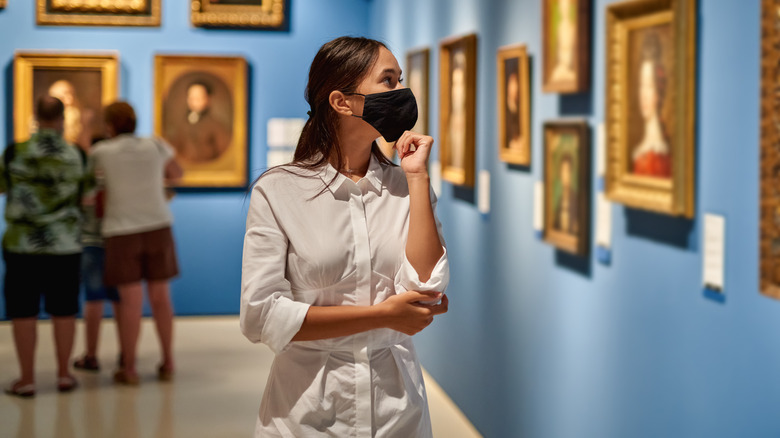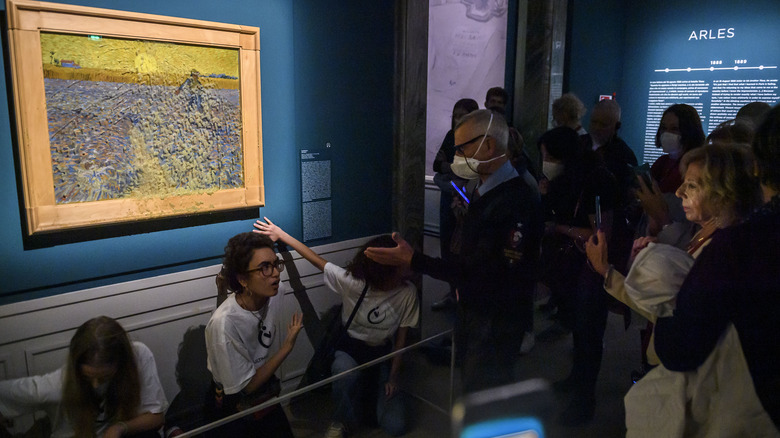What Steps Do Art Galleries Take To Ensure Priceless Paintings Are Protected?
As of late, there have been many protestor attacks on famous art at various galleries. According to Yahoo! News, on Nov. 15, 2022, vandalism was commited at the Leopold Museum in Vienna, Austria. The suspects were associated with the climate activist group, Last Generation Austria. To protest against the Austrian government and excessive fossil fuel use, the protesters targeted Gustav Klimt's painting from 1915 entitled, "Death and Life." The protesters threw black liquid at the painting, though the painting itself was behind glass, preventing any damage.
It wouldn't be the first time an art gallery was targeted during a protest. Just Stop Oil activists threw soup at Vincent Van Gogh's iconic painting, "Sunflowers," earlier in the year (via The Guardian). With that being said, how do museums prepare for such potential attacks? What precautions are made? And what steps are taken to ensure that priceless paintings are protected?
Here's how museums protect priceless art pieces
When it comes to art museums, all kinds of threats exist. Of course, there's the threat of vandalism and theft, but there are other natural threats, too, such as flooding and fire. So how do museums go about protecting priceless artwork from these elements? According to the U.S. Justice Department Office of Justice Programs, there are a host of technological tools and features some museums have at their disposal. These include guard devices like trip wires, pressure door mats, infrared, microwave, photoelectric technology for intruder detection, and so on.
As stated by the Las Vegas Sun, additional countermeasures to protect against things like moisture and temperature variations also exist. A lot of priceless works of art are contained in what are known as climate-controlled glass boxes. These boxes help protect the artwork from damaging elements like air moisture. Rope barriers, sensors, flood walls, and simple inventory tracking also go a long way in safeguarding vital artwork.
Art vandalism can't be stopped without the compromise of for patrons
While numerous measures are in place for keeping museum holdings protected, the sad truth is that no museum can completely prevent vandalism. As The Washington Post reports, there is an Association for Research Into Crimes Against Art with the goal of professional development, research, and prevention of art crime. The FBI's Art Crime Team is dedicated to tracking stolen artwork. However, neither collect actual data regarding vandalized art. Bill Anderson of Art Guard, a security company that works with museums to protect art, told The Washington Post, "But there's little that can ultimately prevent someone from vandalizing a painting if they really want to."
The reality of art crime is that taking maximum precautions against it also dilutes the art experience for the viewer. "The sad paradox is that to really protect it, you need plexiglass. But if you put it under glass and behind ropes, you might as well just show it in a catalogue," Bill Anderson said (via The Washington Post). For the most part, prevention is a tricky subject, though established precautions are usually enough to stop most vandalism. Usually, when art is vandalized, attacks are stopped by glass coverings, as was the case with the Monet painting attack that happened in October 2022 (per CNET). Museums are a public good, so artwork should be available for the public to see, regardless of potential vandalism.


